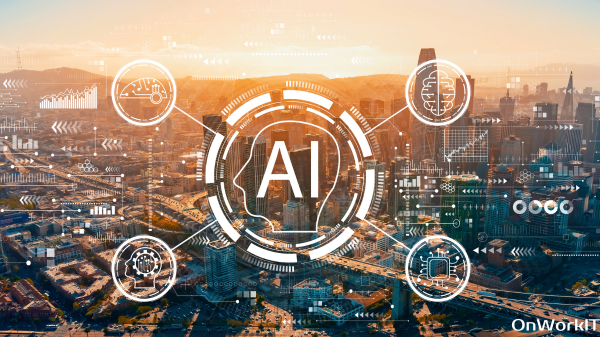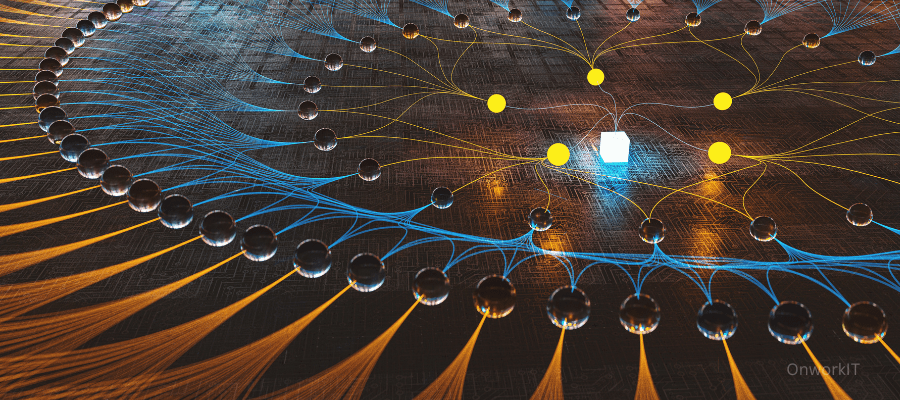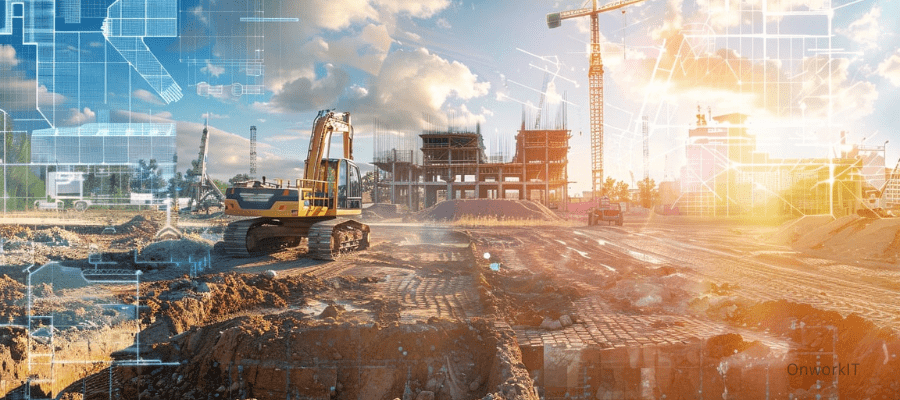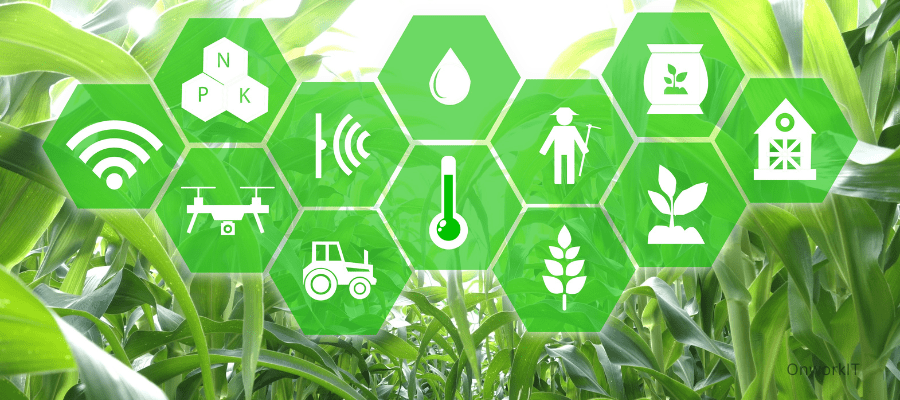Artificial Intelligence AI in Agriculture : The agricultural sector worldwide faces multiple challenges—growing populations demanding more food, alongside resource shortages like depleted groundwater, less fertile land, and unpredictable weather patterns due to global warming. This creates instability: whether we have enough resources to feed the growing population, our primary concern depends on these resources.
The ultimate solution lies in a sustainable agricultural revolution, with the core being Artificial Intelligence (AI) in the 21st century, a pivotal feature of this miracle. Traditional agriculture was based on generational learning from ancestors’ experiences. Despite this, AI has brought about a precision-focused agricultural revolution, empowering farmers with data and skills to manage every aspect of their farms. This article discusses AI’s role in agriculture, fluctuating environmental issues, and guiding paths for secure and prosperous food production.
Table of Contents
- AI Precision Farming: Cultivating Intelligence
- AI’s Role in Agriculture: Path to Sustainable Food Security
AI Precision Farming: Cultivating Intelligence
On the one hand, natural farming methods emphasize adapting to each field’s needs and conditions using diverse techniques. However, this approach may lead to inefficient resource management and mismatched crop forms. Nonetheless, new precision agriculture varieties have emerged with technologies such as robotics and data-driven positioning, adjusting strategies based on specific regional data. AI balances resource allocation and ensures plant health.
AI’s Role in Agriculture: Path to Sustainable Food Security
AI acts as a precision engine by meticulously meeting each square meter’s requirements. AI makes this possible by analyzing vast data collected from various sources:
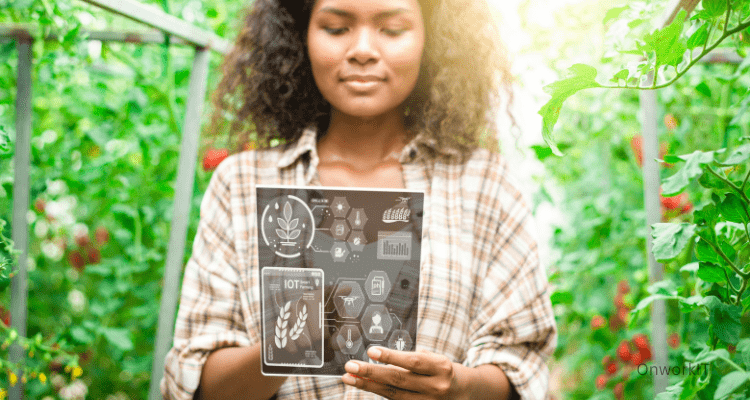
- Sensors: Soil moisture sensors, weather stations, and even drones monitor soil conditions, crop status, and weather patterns in real-time.
- Historical Data: Previous yield data, seasonal fertilizer usage, and pest damage provide insights into field performance.
AI algorithms interpret this data, allowing experts to identify changes in various regions. It can identify areas with nutrient deficiencies, weed presence, or high water pressure. This enables farmers to:
- Optimize Resource Use: AI accurately determines the fertilizer and water ratios each crop needs, reducing waste and environmental impact.
- Reduce Environmental Impact: Precision agriculture significantly reduces water and fertilizer use without compromising crop yield, crucial for preserving water quality and biodiversity. Targeted pest control methods also decrease overall pesticide use, making the ecosystem cleaner.
- Enhance Disease and Pest Control: AI uses data analysis to detect disease outbreaks or pest issues in specific areas. Advanced detection minimizes pesticide use and reduces adverse environmental effects.
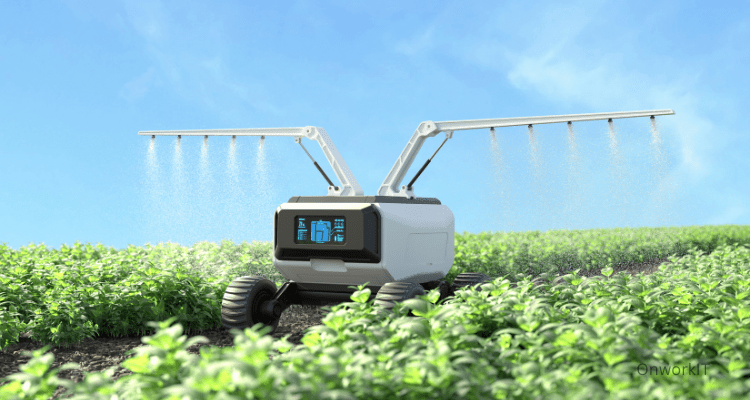
AI maximizes crop yields by adjusting crop depth, density, and variety based on microclimates and soil variations in each field. This boosts production potential, as seen with Seedazz™ technology from Cartesian Labs, which prepares individual planting prescriptions for each plot.
Beyond Basic Concepts: Regenerative Agriculture
AI enhances crop yields through intelligent cultivation for an ever-growing world population, becoming indispensable in agriculture. As a tool for these efforts, AI is making progress, bridging the gap between crop yields and sustainable food security.
Conclusion
The integration of AI into agriculture promises reduced waste and optimized resource allocation, ensuring food quality and security for all income levels. This collaborative effort among researchers, policymakers, and food chain participants is vital to achieving the highest levels of agricultural production globally.
Precision Planting and Farming: Customized Strategies for Maximizing Potential
Planting is an active approach! Artificial intelligence in agriculture allows farmers to develop strategies tailored to specific areas of their fields, maximizing the potential of each acre:
- Microclimate and Soil Analysis: AI analyzes extensive data on soil conditions, weather patterns, and historical field data to provide better recommendations to farmers.
- Data-Driven Planting Decisions: Based on analysis, AI suggests optimal planting depths, densities, yields, and suitable crops to ensure high productivity. This approach adapts to local microclimates and soil conditions for maximum yield.
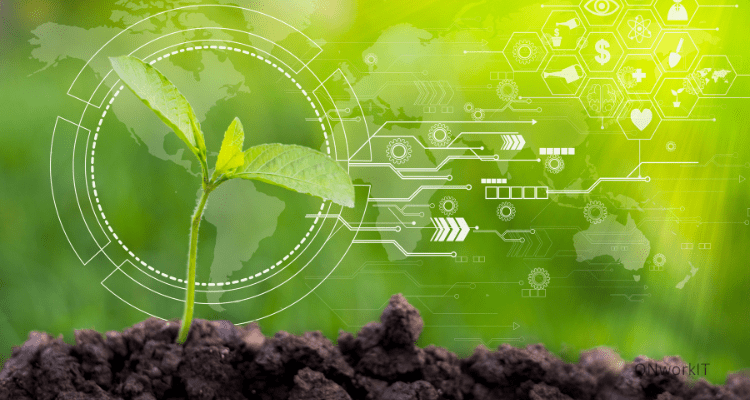
Example: Cartesian Labs—Seedazz™ – This platform is one of many tools emphasizing AI’s role in choosing the right seeds for planting. Seedazz™ captures data such as soil moisture, past yields, and weather forecasts to design customized prescriptions for each field, ensuring optimal planting techniques and satisfactory cumulative yields.
Looking Ahead: A Promising Future
Using AI in agriculture to boost crop yields extends beyond planting and harvesting. Future possibilities include:

- Weather Resilience Forecast Modeling: AI can assess historical weather data and climate patterns to predict potential weather anomalies like droughts or floods. Farmers can adjust planting schedules, use drought-resistant crops, or employ effective irrigation methods to manage production.
- Optimizing Pollination and Crop Health: AI-equipped robotic systems target specific elements and nutrients for crops or terrain contours, enhancing processes for better crop health and increased yields.
Path Forward: Fostering Collaboration
Artificial Intelligence holds immense potential, especially for small-scale farmers. Overcoming barriers such as accessibility, costs, data privacy, and literacy is crucial. Collaboration among researchers, policymakers, and the agricultural community is essential to:
- Develop affordable and user-friendly AI solutions tailored to farmers’ needs.
- Ensure data privacy and security protocols are robust and farmer-friendly.
- Bridge the digital divide through infrastructure investment and training programs, enabling all farmers to benefit from AI advancements.
Conclusion
AI is a dynamic tool transforming agricultural economies into more sustainable, efficient, and productive systems. By applying AI in precision agriculture, adjusting resource use, and enhancing crop yields, we can address food security challenges in a rapidly evolving world. Responsible AI products can reduce environmental impact, minimize food waste, and empower farmers with smart data management for optimal outcomes.

Achieving the full potential of AI in agriculture requires concerted efforts. Researchers must develop cost-effective and user-friendly AI tools, policymakers must ensure data security while protecting farmers, and agricultural units must train professionals to integrate AI effectively into their systems.
Together, by fostering collaboration and addressing challenges, we can responsibly harness AI’s role in agriculture, envisioning a future where farms utilize existing and emerging Technologies to create a bountiful world. AI holds the promise to revolutionize modern agriculture, ensuring a sustainable food supply for future generations. Let’s work together towards a brighter future where AI helps build a better world for all.


